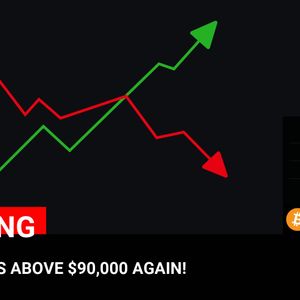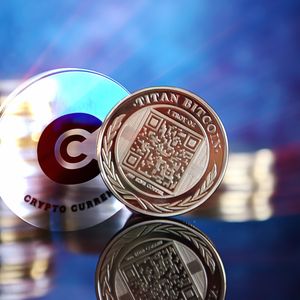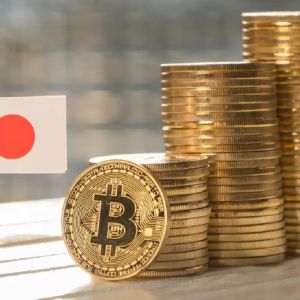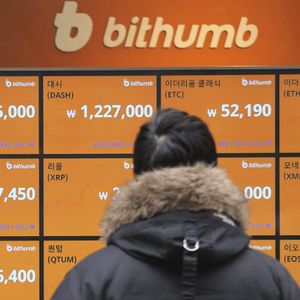Exciting news for crypto enthusiasts in Hong Kong and beyond! The financial landscape in Hong Kong is about to witness a significant shift as Huaxia Fund, a subsidiary of China Asset Management (ChinaAMC), prepares to inject a powerful feature into its ETH ETF staking product. Imagine earning rewards simply by holding onto your Ethereum ETF – that’s precisely what Huaxia Fund is set to offer. Let’s dive into how this game-changing development is reshaping the Hong Kong crypto ETF market and what it means for investors like you. What’s the Buzz Around Huaxia Fund’s ETH ETF Staking? On May 15th, Huaxia Fund will officially introduce staking capabilities to its Ethereum exchange-traded fund (ETF). This makes them only the second entity in Hong Kong to embrace this innovative feature, marking a significant leap forward for crypto investment products in the region. But why is this such a big deal? Let’s break it down: First Mover Advantage (Almost): While not the absolute first, Huaxia Fund is among the pioneers in Hong Kong to offer Ethereum staking within an ETF structure. This positions them as a forward-thinking player in the rapidly evolving crypto ETF space. Regulatory Green Light: This move is made possible by the recent progressive changes in crypto regulations Hong Kong . The Securities and Futures Commission (SFC) has updated its rules to allow regulated firms to provide crypto staking services, paving the way for institutions like Huaxia Fund to innovate. Institutional Backing and Trust: As a subsidiary of ChinaAMC, a major player in asset management, Huaxia Fund brings credibility and trust to the crypto ETF market. Their foray into staking further legitimizes crypto investments within traditional financial frameworks. Enhanced Investor Appeal: Staking adds an extra layer of attractiveness to ETH ETFs. Investors can now potentially earn passive income on their ETH holdings through staking rewards, in addition to potential capital appreciation. This isn’t just about adding a feature; it’s about fundamentally enhancing the value proposition of a Huaxia Fund ETF and making crypto investments more appealing to a wider audience in Hong Kong. The Mechanics: How Does ETH ETF Staking Work? For those new to the concept, staking might sound a bit technical. But the core idea is quite simple. When you stake your Ethereum, you are essentially participating in the network’s operation. Here’s a simplified explanation in the context of an ETF: Holding ETH ETF Shares: You, as an investor, hold shares of the Huaxia Fund ETH ETF. These shares represent ownership of underlying Ethereum. ETF Provider Stakes ETH: Huaxia Fund, as the ETF provider, takes a portion of the ETH held by the ETF and stakes it on the Ethereum network. Earning Staking Rewards: By staking, the ETF provider earns staking rewards. These rewards are generated by the Ethereum network for validating transactions and securing the blockchain. Passing Rewards to Investors (Potentially): While not explicitly stated in the provided content whether the staking rewards will be directly passed on to ETF holders, in typical staking ETF models, a portion of these rewards are often reflected in the ETF’s overall performance, potentially increasing the ETF’s value over time. It’s crucial to check the specific ETF prospectus for details on reward distribution. Key Player: OSL Digital Services To ensure the security and efficiency of this staking operation, Huaxia Fund is partnering with OSL Digital Services. OSL will provide the crucial custody and staking infrastructure. This partnership highlights the growing synergy between traditional finance and specialized crypto service providers. Why is Hong Kong Becoming a Crypto Hub? The Regulatory Shift Hong Kong’s proactive approach to crypto regulation is a key factor driving these innovations. For a while, the regulatory landscape around cryptocurrencies globally has been a patchwork of approaches, ranging from outright bans to cautious acceptance. Hong Kong, however, is positioning itself as a more welcoming and regulated hub for digital assets. The recent rule change by the SFC, allowing regulated entities to offer crypto staking, is a testament to this shift. Factors Contributing to Hong Kong’s Crypto-Friendly Stance: Desire to be a Financial Innovation Hub: Hong Kong has historically been a major financial center. Embracing crypto and fintech innovation is seen as crucial to maintaining this status in the evolving global economy. Clearer Regulatory Framework: By establishing clear rules and guidelines, Hong Kong is aiming to attract legitimate crypto businesses and investors while mitigating risks. The SFC’s move on staking is a prime example of this clarity. Competition in Asia: There’s a regional race to become a crypto hub. Locations like Singapore and Dubai are also vying for this position. Hong Kong’s recent regulatory moves signal its intent to be a serious contender. Attracting Institutional Investment: Regulations that foster trust and security are essential to attract institutional investors into the crypto space. Allowing staking within regulated ETFs is a step in this direction. This supportive regulatory environment is not just beneficial for companies like Huaxia Fund; it’s creating a more vibrant and dynamic crypto ecosystem in Hong Kong, potentially attracting talent, investment, and further innovation. Benefits of ETH ETF Staking: A Win-Win Scenario? The introduction of staking to ETH ETFs offers several potential benefits for various stakeholders: Stakeholder Benefit Investors Potential to earn passive income through staking rewards, enhancing overall returns. Exposure to Ethereum with the convenience and security of a regulated ETF. Simplified staking process – no need to manage staking infrastructure directly. ETF Providers (like Huaxia Fund) Differentiated product offering, potentially attracting more investors and assets under management. Opportunity to generate additional revenue through staking rewards (part of which may be reinvested or contribute to ETF fees). Enhanced reputation as an innovator in the crypto ETF market. Ethereum Network Increased participation in staking, contributing to network security and decentralization. Greater adoption of Ethereum as an asset class. Hong Kong as a Financial Hub Strengthened position as a leading center for fintech and crypto innovation. Attraction of crypto businesses and investment. Economic growth and job creation in the crypto sector. While the benefits appear substantial, it’s also important to consider potential challenges. Challenges and Considerations Introducing staking to ETH ETFs is not without its complexities and potential challenges: Regulatory Uncertainty (Evolving Landscape): While Hong Kong’s regulations are becoming clearer, the global regulatory landscape for crypto is still evolving. Future changes could impact staking ETFs. Custodial Risks: Secure custody of staked ETH is paramount. Reliance on third-party custodians like OSL introduces a layer of dependency and potential risk, although OSL is a reputable provider. Slashing Risks: In proof-of-stake systems like Ethereum, there’s a risk of “slashing” – penalties imposed on validators for misbehavior. ETF providers need robust risk management to mitigate this. Complexity for Investors: While simplified compared to direct staking, understanding the nuances of staking ETFs and how rewards are distributed may still require some investor education. Fee Structures: Investors need to be aware of the fee structures associated with staking ETFs and how these fees impact net returns after staking rewards. Actionable Insights for Investors Considering the developments around Hong Kong crypto ETF staking, here are some actionable insights for investors: Do Your Due Diligence: Before investing in any ETH ETF, especially staking ETFs, thoroughly research the ETF provider (like Huaxia Fund ETF ), understand the fee structure, and review the ETF prospectus for details on staking mechanisms and reward distribution. Understand Staking Risks: Familiarize yourself with the risks associated with staking, including slashing and custodial risks. Assess your risk tolerance. Compare Different ETFs: As more staking ETFs become available, compare their features, fees, and potential returns. Don’t just focus on staking; consider the overall ETF structure and management. Stay Informed on Regulations: Keep abreast of regulatory developments in Hong Kong and globally related to crypto and ETFs. Regulatory changes can impact the landscape. Consider Long-Term Potential: View staking ETFs as a long-term investment in the Ethereum ecosystem and the broader crypto space. Staking rewards can compound over time. Conclusion: A Bold Step Forward for Crypto ETFs Huaxia Fund’s move to add staking to its ETH ETF in Hong Kong is undoubtedly a revolutionary step. It signifies the growing maturity of the crypto market and the increasing acceptance of digital assets within mainstream finance. As crypto regulations Hong Kong become more refined and supportive, we can expect to see further innovation and adoption of crypto investment products. For investors, this development opens up exciting new avenues to participate in the Ethereum ecosystem and potentially enhance their portfolio returns. The journey of crypto ETFs with staking is just beginning, and Hong Kong is positioning itself at the forefront of this financial evolution. To learn more about the latest crypto market trends, explore our article on key developments shaping Ethereum institutional adoption.


















